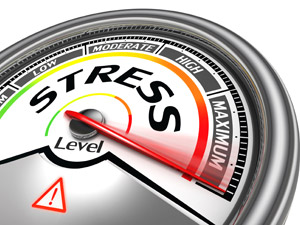By Lyndon Gee, guest blogger
BUTTER or margarine? As a health and food writer I’m often asked which I prefer. That’s a good question with healthy eating for children on the agenda for Jamie Oliver’s Food Revolution Day. Where did the controversy about butter v margarine all start? Let’s begin by looking at margarine.
Margarine was invented in the 1870s by a French scientist as a cheap alternative to butter. Originally made with animal fats, technology enabled cheaper, vegetable oils to be solidified – ‘hydrogenated’ – so they began to be used.
Consumers didn’t like the fact that margarine was white and looked like lard, so manufacturers added dye to make it appear more like butter. Margarines aimed for a butter-like taste and were sold as a cheaper alternative.
Hydrogenation is the technique used to make liquid fats solid. However it creates trans fats which are now known to be seriously bad for your heart. A British Medical Journal article in the 1990s stated ‘reducing UK consumption of trans fats could save 7,000 lives a year’.
In 1993, ethical entrepreneur Craig Sams, founder of Green & Blacks and Chairman of the Soil Association, launched a spread that was free of trans fats. In an advertisement, Sams called trans fats ‘the biggest dietary hazard of our time’.
The industry was outraged. At that time all major brands contained trans fats. Unilever, which owns the market leading brand, objected to the Advertising Standards Authority who banned the ad saying Sams was selling on fear of illness.
Interestingly, Unilever removed trans fats by the mid 90s but trans fats remained in many margarines for another 10 years.
So for more than four decades doctors and the food industry told us to switch to margarine, yet those following the advice were being fed harmful trans fats!
In the 1980s and 90s, with this growing concern over trans fats and health claims for margarine looking dubious, margarine was rebranded as ‘spread’. You’ll no longer see any products labelled margarine.
Research went into fortifying margarine (spread) with vitamins, minerals and plant sterols so health claims could be added, but many consumers are now turning back to butter because it is a natural product and they prefer the taste.
Butter and spreads make up only about an eighth of our total fat intake. Most fat, especially saturated fat, comes from meat – mainly processed meats like sausages, burgers, pies and ready meals. Cakes and biscuits provide yet more fat. Even reduced fat margarine is a high fat food.
We all need fat in our diet, we just eat too much of it. But it’s easier to see how much butter you’re putting on your toast, than it is to know how much fat is in a ready meal or take away.
In praise of butter!
Ecologically, our bodies are used to butter as we’ve been enjoying it for thousands of years, while margarine has only been widely used for under 100.
Elizabeth R. Laird, guest lecturer and professor of nutrition education at Columbia University, when asked if she preferred butter or margarine, replied ‘I would rather trust a cow than a chemist’.
So do I prefer butter to margarine? Most definitely yes!
My top tips for enjoying butter….
Buy good quality butter, just use a bit less of it.
Savour different butters from farmers’ markets or small producers. The French even have protected origin status for some of their butters.
Try using unsalted butter.
Get butter to room temperature so you can spread it evenly, this also brings out the flavour.
I prefer to enjoy my butter in its natural state, spread onto good bread or toast. I don’t use lots in cooking.
For buttery mashed potato I add plenty of milk to make the mash creamy then beat in just a little butter just before serving.
LYNDON GEE is an established food and health writer and monthly columnist and food expert for Health & Fitness Magazine. He is a contributor to many other magazines including Fine Food Digest, Tesco Food Club, Healthy Living, BBC Good Food, and Optimum Nutrition Magazine. He’s appeared on the BBC Politics Show and Asian TV; spoken about food businesses on Radio 4 Today programme and Radio 5 Live.




